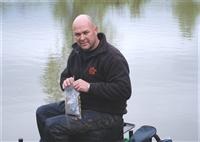What is a Sea Trout?
English and Welsh rivers were colonised by sea trout at the end of the last Ice Age, and their descendents are the populations of brown trout and sea trout we know today (both Salmo trutta). Resident and migratory characteristics have developed within individual catchments, so that some fish now remain permanently resident (brown trout), some always migrate (sea trout) and others can do either, depending on circumstances. It is believed that both genetics and environmental issues, such as habitat and available food, play a part in whether or not a trout migrates to sea.
Why do Sea Trout require Protection?
At the 1st International Sea Trout Symposium at Cardiff University in July 2004, four key issues emerged as being vital to the future of our sea trout stocks:
Sea trout utilise tiny spawning streams, but these are the very habitats most at threat from unsympathetic land use and agriculture.
Finnish sea trout stocks have been savaged by fish being accidentally caught in the coastal white fish gill-net fishery. The UK's coastal waters are exploited by bass gill-netters, and the potential threat to sea trout is obvious.
Larger female sea trout are often multiple repeat spawners with a potential to deposit many eggs over their lifetime, so maximising their contribution to local stocks. They have proven their fitness to survive in both the river and the sea and so contain important genes to pass on to their progeny. Protection of larger fish is therefore vital.
Some scientific opinion suggests that salmon are on the edge of their viable range in the southern half of England and Wales. If our climate becomes warmer, as is widely predicted through global warming, sea trout will also be vulnerable to the resulting environmental pressures, such as droughts, abnormal winter flows, inevitable changes to their growth/life history and, weakened by sub-lethal levels of pollution while in rivers, they might be unable to survive the additional stress of migrating from freshwater into the marine environment.
What can you do to help?
Policies to protect spawning habitat and the control of coastal netting are matters best dealt with at national level by influencing legislation and byelaws. Joining a national organisation is an excellent way of helping this work (see organisations on back page).
Locally, you can help by supporting the work of Rivers Trusts - contact the Association of Rivers Trusts or Afonydd Cymru for further information.
Anglers can help conserve sea trout stocks by showing restraint in the number of fish they kill. A 'large' sea trout will vary from river to river but as a rule, we believe that all fish over 5 lbs are best released unharmed to the water, and this size limit should be reduced in areas where smaller sea trout are the norm.
Finally, if you see a pollution incident, or anything else which you feel could be detrimental to fish stocks in rivers or lakes, contact the Environment Agency Emergency number: 0800 807060
Sporting Value
Sea trout are superb sporting fish, highly prized by game anglers throughout England and Wales. Whereas many rivers have seen a decline in salmon runs, sea trout populations have generally fared rather better and, in several areas, their value to anglers and the local economy now exceeds that of salmon. However, warning signs have recently appeared which suggest that sea trout are also under pressure. Therefore, protective measures taken now might avert a future collapse in stocks.
How do you safely release a Sea Trout?
Most importantly, use single, barbless hooks and as strong a tippet as feasible. Play the sea trout quickly and, wherever possible, net the fish in water deep enough to avoid contact with river bed or bank. Handle the fish sparingly (this is where barbless hooks will greatly assist), using tweezers or pliers to remove the hook, and then release from the net. However, where a sea trout has been played to exhaustion, it will be necessary to carefully hold the fish facing the current until it regains sufficient strength to swim away from the hand. Take extra care during the summer months when water temperatures are high and fish can take longer to recover.
Habitat improvement
This example shows how the creation of buffer zones reduces impact from farm stock and quickly returns a stretch of river to a more natural state.
Don't forget to report your catch!
Catch statistics are a vital tool in determining the local and national trends in sea trout populations. Don't forget to fill in the returns (for both killed and returned fish) on the back of your Environment Agency Migratory Fish Licence and send back to the address supplied. This should also include nil returns, as fishing effort plays an important part in the Environment Agency's current methodology for sea trout stock assessment, as it is based on trends in catch per licence day.
Based on the latest available rod catch and effort data, all rivers would benefit from increased catch and release of sea trout, although those under particular pressure include:
South West: Otter, Dart, Fowey, Torridge, Camel
North West: Ribble, Lune, Cumbrian Esk, Derwent, Border Esk, Eden
Wales: Tawe, Teifi, Dwyfawr, Tywi, Ogmore, Loughor, Ogwen
Research
Finally, several sea trout projects are now underway, including the Celtic Sea Trout Project (www.celticseatrout.com). Some of these may require anglers to contribute scale samples and, although this will be on a voluntary basis, your assistance wherever possible would be greatly appreciated.
Further information
Salmon & Trout Association www.salmon-trout.org
Welsh Salmon and Trout Angling Association www.wstaa.org
Environment Agency www.environment-agency.gov.uk
Association of Rivers Trusts www.associationofriverstrusts.org.uk
Afonydd Cymru www.afonyddcymru.org

